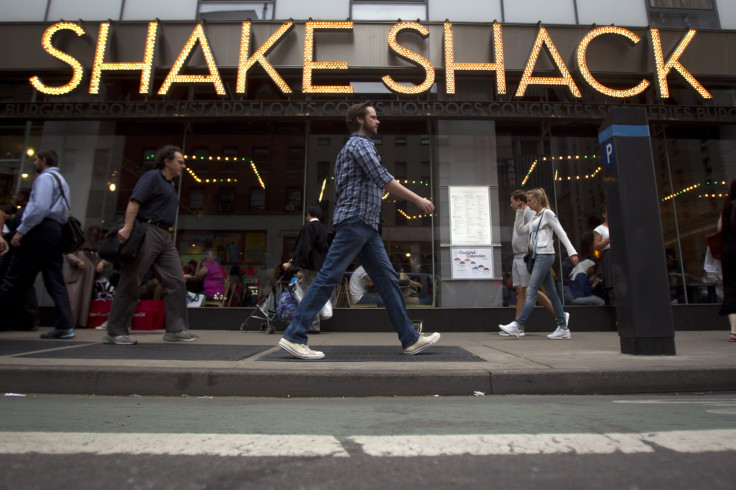Shake Shack Inc. IPO And McDonald's Corporation In Crisis: A Tale of Two Burgers

Just as McDonald’s Inc. announced that its CEO was leaving the “McFamily” after one of its worst years on record, Shake Shack Inc. increased the value of its initial public offering to roughly $675 million. Why are the fortunes of these two burger-flipping establishments so divergent? For one, Shake Shack, which makes its Wall Street debut Friday morning, is no McDonald’s.
“They’re not the same; it’s a false dichotomy,” said John Gordon, a restaurant analyst at Pacific Management Consulting Groups. “They have different models, different customers, different everything.”
Even so, in the midst of changing consumer tastes and a trend toward healthier dining options, analysts and investors are wondering what the world’s largest, most famous restaurant chain, a global symbol of America, can learn from its new competitor.
The companies both sell burgers, but that’s where the similarities end. With its all-natural antibiotic-free beef, handmade tabletops constructed from reclaimed bowling alleys and celebrated $10 hourly starting wages, Shake Shack has just one of a handful of emerging “fast-casual” restaurants. Eateries such as Panera and Five Guys are luring millennials with slightly upscale, experiential dining, and leaving traditional mainstays like McDonald's in their organic, locally sourced dust.
Long ago, McDonald’s was the hip upstart. The first McDonald’s restaurants opened on dusty highways in rural America in the 1950s, and revolutionized the way families thought about going out for dinner. Over the decades the company became known for getting food to customers as fast and cheaply as possible while increasing its presence to its current 36,000 locations worldwide.
But despite its massive global reach and emblematic brand, 2014 was one of McDonald’s worst years. Its net income fell nearly 15 percent to $4.76 billion last year, while same-store sales for November were down 2.2 percent globally and 4.6 percent in the United States compared to the month earlier. As it battled nationwide worker strikes and questions about the 19 ingredients in its french fries, its stock has stayed relatively flat in the past two years, even as the Dow Jones Industrial Average gained 36 percent.
In recent years McDonald’s has tried to attract younger consumers by adding customizable options and new menu items, but in December executives backtracked on this attempt, announcing plans to slim down its American offerings drastically. Though McDonald’s generated $27.4 billion in sales last year, its average guest check is low, at about $4.75.
“They’re just aimed at different customers,” Gordon said, noting that McDonald’s average customers are families, seniors and baby boomers, while Shake Shack appeals to urban millennials. “Shake Shack isn’t going to do well in Tupelo, Mississippi, but it’ll do great on the North Side of Chicago.”
When a similar West Coast burger chain called The Habit Restaurants Inc. (HABT) went public in November, it raised $90 million after offering $18 per share. This week, its stock is trading in the $30 range. Since Chipotle Mexican Grill Inc., went public in 2006, its stock is up more than 1,500 percent.
Gordon said it’s all part of the natural business cycle. Shake Shack is what McDonald’s once was, and in a few decades it could have just as much trouble.
“Of course these restaurants have a nice track record, but 40 years from now Shake Shack will be old, too,” he noted. “But clearly they are nowhere close to that right now.”
© Copyright IBTimes 2024. All rights reserved.





















